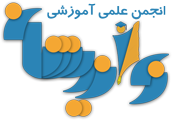جستجو در تالارهای گفتگو
در حال نمایش نتایج برای برچسب های 'interfacing'.
4 نتیجه پیدا شد
-
USB ASP Downloader for ATMega For programming the AVR microcontrollers, Atmel has provided special software that can be downloaded from the Atmel website. Software is AVRStudio. This software uses assembly language as the language of instrumentality. AVRStudio addition, there are some third party software that can be used to create programs on the AVR. These third-party software using high level programming language like C, Java, or Basic. To make removal from the computer into a chip, can be used several ways such as using JTAG cable or using artificial Atmel STK. However, you also can use the schematic circuit above to make a downloader ATMega microcontrollers based USB ports. Here is my USB downloader which I successfully created. Imade the USB ASP Downloader based ATMega8. hopefully can help you. Schematic circuit of USB ASP Downloader
-
- circuit
- development board
-
(و 23 مورد دیگر)
برچسب زده شده با :
-
Minimum System ATMega 8535,16,32 Minimum system ATmega 8535/16/32 schematic circuit that is integrated with RS232 serial communication. Minimum System is a microcontroller circuit that used to work. This circuit usually consists of: 1. Crystal = to generate pulse 2. a series reset = to do the “Restart” work microcontroller Components that can be used as input and output such as: 1. display = LCD, dot matrix, seven segment, etc. 2. input = keypad, push button, etc. Schematics above are the minimum system that has been integrated with RS232 serial communication. with the RS232, then the minimum system is ready to be used to communicate between the microcontroller to the computer, or microcontroller to microcontroller.
-
- 2
-

-
- avr atmega
- boards
-
(و 23 مورد دیگر)
برچسب زده شده با :
-
All AVR ports have true Read-Modify-Write functionality when used as general digital I/O ports. This means that the direction of one port pin can be changed without unintentionally changing the direction of any other pin with the SBI and CBI instructions. The same applies when changing drive value (if configured as output) or enabling/disabling of pull-up resistors (if configured as input). Each output buffer has symmetrical drive characteristics with both high sink and source capability. The pin driver is strong enough to drive LED displays directly. All port pins have individually selectable pull-up resistors with a supply-voltage invariant resistance. All I/O pins have protection diodes to both VCC and Ground as indicated in Figure. input and output port in avr atmega 8535 All registers and bit references in this section are written in general form. A lower case “x” represents the numbering letter for the port, and a lower case “n” represents the bit number. However, when using the register or bit defines in a program, the precise form must be used. For example, PORTB3 for bit no. 3 in Port B, here documented generally as PORTxn. The physical I/O Registers and bit locations are listed in “Register Description for I/O-Ports” on page 63. Three I/O memory address locations are allocated for each port, one each for the Data Register – PORTx, Data Direction Register – DDRx, and the Port Input Pins – PINx. The Port Input Pins I/O location is read only, while the Data Register and the Data Direction Register are read/write. In addition, the Pull-up Disable – PUD bit in SFIOR disables the pull-up function for all pins in all ports when set. Most port pins are multiplexed with alternate functions for the peripheral features on the device. How each alternate function interferes with the port pin is described in “Alternate Port Functions”. Refer to the individual module sections for a full description of the alternate functions. Note that enabling the alternate function of some of the port pins does not affect the use of the other pins in the port as general digital I/O. General Digital Input-output Each port pin consists of three register bits: DDxn, PORTxn, and PINxn. As shown in “Register Description for I/O-Ports” on page 63, the DDxn bits are accessed at the DDRx I/O address, the PORTxn bits at the PORTx I/O address, and the PINxn bits at the PINx I/O address. The DDxn bit in the DDRx Register selects the direction of this pin. If DDxn is written logic one, Pxn is configured as an output pin. If DDxn is written logic zero, Pxn is configured as an input pin. If PORTxn is written a logic one when the pin is configured as an input pin, the pull-up resistor is activated. To switch the pull-up resistor off, PORTxn has to be written logic zero or the pin has to be configured as an output pin. The port pins are tri-stated when a reset condition becomes active, even if no clocks are running. If PORTxn is written a logic one when the pin is configured as an output pin, the port pin is driven high (one). If PORTxn is written a logic zero when the pin is configured as an output pin, the port pin is driven low (zero). When switching between tri-state ({DDxn, PORTxn} = 0b00) and output high ({DDxn, PORTxn} = 0b11), an intermediate state with either pull-up enabled ({DDxn, PORTxn} = 0b01) or output low ({DDxn, PORTxn} = 0b10) must occur. Normally, the pull-up enabled state is fully acceptable, as a high-impedant environment will not notice the difference between a strong high driver and a pull-up. If this is not the case, the PUD bit in the SFIOR Register can be set to disable all pull-ups in all ports. Switching between input with pull-up and output low generates the same problem. The user must use either the tri-state ({DDxn, PORTxn} = 0b00) or the output high state ({DDxn, PORTxn} = 0b10) as an intermediate step.
-

آشنایی با رله و مدارهای راه انداز آن با ترانزیستور و میکروکنترلر
Mehdi.Aref پاسخی ارسال کرد برای یک موضوع در مدارات دیجیتال و آنالوگ
امروزه با پیشرفت چشمگیر مدارهای دیجیتال و به ویژه میکرو کنترلرهای و ترغیب کاربران به استفاده از مدارهای تمام اتوماتیک و دیجیتالی، همه فکر و ذکر دانشجویان ، کارآموزان و مهندسین الکترونیک به سمت و سوی فراگیری این شاخص از علم جذاب الکترونیک کشانده شده است؛ تا جایی که برخی از دوستان با بعضی از قطعات پر کاربرد و تقریباً قدیمی همانند رله بیگانه و نا آشنا هستند و فقط اسم آن ها را شنیده اند. غافل از آنکه همین قطعات به ظاهر آنالوگ (!!!) در مدارهای واسطِ (Interfacing) مدارهای دیجیتالی از جمله میکرو کنترلرها استفاده می شود. این مقاله PDF در مورد آشنایی با رله و اجزای داخلی و عملکرد آن و همچنین معرفی انواع رله ها و مدارهای راه انداز (Driver) با ترانزیستور و میکروکنترلر می باشد. دانلود مقاله- 1 پاسخ
-
- 8
-

-
- interfacing
-
(و 4 مورد دیگر)
برچسب زده شده با :
